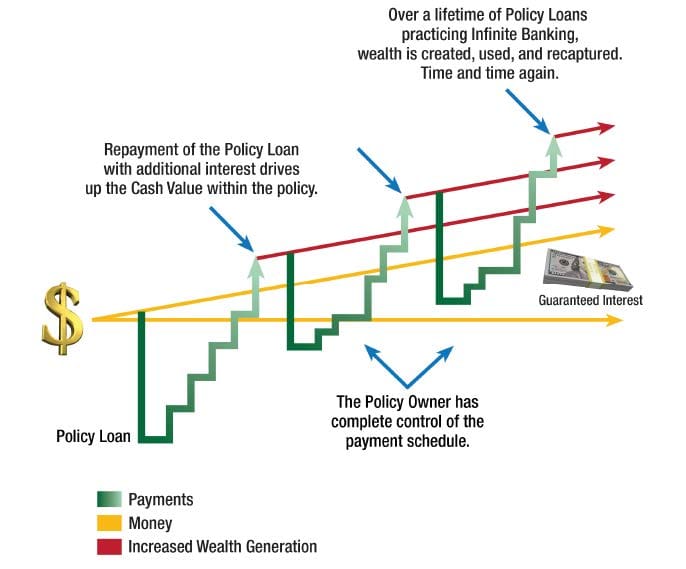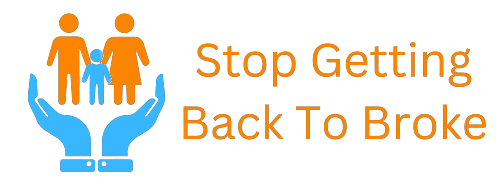Where the rubber meets the road
To understand what makes this system work, we must look at the basic mechanics
of a Dividend Paying, Mutual, Whole Life, Life Insurance Policy. The design of the
policy is such that the policy owner makes premium deposits. This Cash Value held inside this policy has guaranteed growth, “and potential dividends.” In our prior illustration depicting the Bank and the Insurance Company both doing the same job. The Insurance Company must invest this capital to make a profit to pay overhead and death claims that will happen over the year. In the contractual relationship between the Insurance Company and the Policy Owner, The Policy Owner is in the first position to borrow these funds. It is within this caveat that the win-win situation is in the details.
1. The highlight to understand is that the Cash Value in the policy, never leaves the policy. The compounding is never interrupted.
2. The loan, is directly from the Insurance Company. The Cash Value in the policy is, in fact, collateral for the loan.
3. For the Policy Owner, this is accessible capital, limited only by the total Cash Value accumulated within the policy. No approval process, credit check, explanations, nothing. As a matter of fact, it is a guaranteed interest-only loan for life. The repayment schedule is completely controlled by the Policy Owner.
4.But it is not a one-sided deal. This is a very good position for the Insurance Company, also. They are not tasked with looking for a place to put this capital to work. The loan from the Insurance Company is collateralized one-to-one by the Cash Value within the policy. The Insurance Company charges interest on the loan, satisfying the need for a profit on the capital. Worst case scenario, if the Insured dies, the loan is satisfied with proceeds from the Death Benefit and the balance is paid to the Beneficiary.
Now for the “I pay cash camp,” who just read interest paid to the Insurance Company and went into a tailspin. The standard finance charge on a policy loan in the insur ance industry is proportional to the guaranteed interest paid on the Cash Value, “Guaranteed, by the insurance company.” Yes, there is a profit margin for the insur ance company, but remember “you,” the Owner of a Dividend Paying Policy, are, in fact, an owner in the company. It is in your best interest for the company to make a profit. This is, where the dividends come from. Let’s interpret that statement on the me and you level. There is interest paid inside the policy on the cash value, and there is interest charged for the loan, much like using a conventional bank. Only with this vehicle, you, as the owner of a Whole Life Policy held within a Mutual Company are, in fact, proportionally entitled to dividends as paid by the company.

The Detail of Guarantee.
Back to our timeline, now, from day one, our capital has guaranteed growth. If we look back at the example in Chapter 2, the saver now is in the win-win scenario. His compounding of the capital is never interrupted, although when in the borrower role, he is in a position of paying interest. But that’s not the whole story. The detail in the building of our Private Family Financing system is using a Dividend Paying, Mutual Owned Life Insurance Company.
Dividend Paying, Whole Life, Life Insurance Company
A “Mutual Life Insurance Company,” is, by definition, a company that is owned by the policy owners. Dividends are profits. Once all the obligations have been met by the insurance company and the management is satisfied that there are ample reserves to meet the death claims and corporate expenses, the profits are divided among the shareholders. In a Mutual Life Insurance Company, it is the Policy Owners that are the shareholders of the company. And, proportional to deposits, the profits are divided, this is a dividend.
A man with a surplus can control circumstances,
but a man without asurplus is controlled by them,
and often has no opportunity to exercise.judgement.
Harvey S. Firestone

